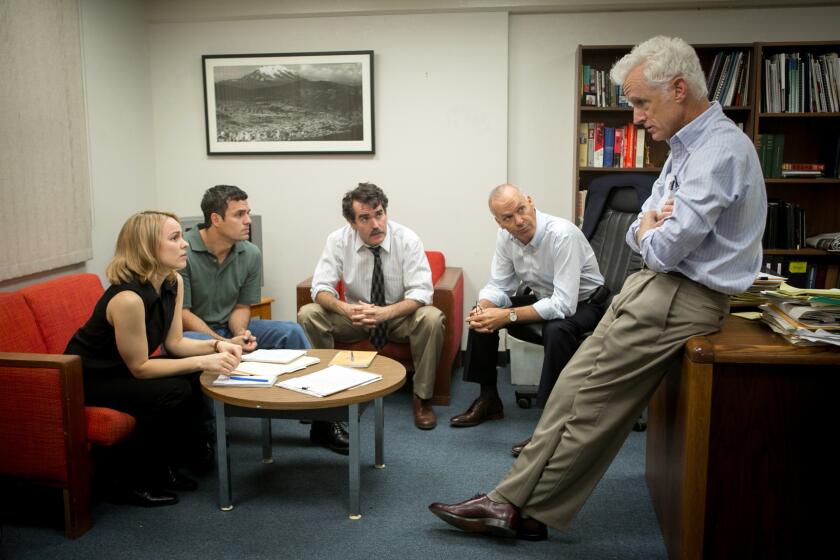Zipcar aims to make car sharing a way of life
Scott Griffith wants to rent you a car, but just for an hour or two, or maybe the afternoon.
He is the chief executive of Zipcar Inc., the Cambridge, Mass., company that in a few short years has signed up nearly 700,000 members and has become profitable in recent quarters operating the nation’s largest car-share program.
Zipcar generates about $63 a day from each of its 10,000 vehicles, and it earned nearly $4 million in the fourth quarter of last year, its second consecutive profit.
In Southern California, Zipcar operates at many college campuses, including some of the smaller schools such as Chapman University and Occidental College. It also has rental cars in Hollywood, West Hollywood and Santa Monica.
Renters need to be at least 18 years old. Gas and insurance is included in the hourly rate, which starts at $8 in Southern California but requires both an application fee and an annual membership charge.
Griffith, who has a bachelor’s degree in engineering from Carnegie Mellon University and an MBA from the University of Chicago, talked to The Times about how car sharing is changing vehicle ownership.
Zipcar might be best known for its popularity on college campuses renting to young people. Why is that important?
It is about 10% of our business and is growing faster than our total business. We get great marketing from a university relationship. The students get to know our brand and realize they don’t have to own a car. When they graduate they might move to a city like Chicago where there is good public transit and decide they don’t need a car and to stay with us.
While you are known for the college business, what are your core markets?
The two largest markets in numbers of members and fleet size are New York and London. We have a cluster of four markets that we call our established markets — Boston, Washington, D.C., San Francisco and New York — because they account for a significant chunk of our revenue.
Those four “established” markets and London all have extensive public transit and are dense. Can your model work in disperse cities without those characteristics?
Places such as Los Angeles, Denver and Houston are a struggle. Those are places where most people come into the city and they leave in the evening.
In picking markets, we like to look really at how many people are staying in the city because they work in the city. They don’t roll out at night, and we look at parking rates. That makes it cost more to own a car. We do best where there are high parking rates and good public transit and where people live in the city.
Where do you see growth for Zipcar?
The starting point is the cities we are in today. About 10 million people can walk to a Zipcar today in less than 10 minutes. We have about 700,000 members. That means there are over 9 million people who have not signed up but can still walk to our cars. Getting more of them to join is the most efficient way to grow.
New cities are the second growth avenue. We just bought a controlling stake in a Spanish company in Barcelona, and we have told Wall Street we will open another city in Europe this year.
The third thing we are looking at is driving more commerce within the membership base. Our aspiration is to create a brand that meets our mission — simple, responsible urban living. We want to create a community of Zipsters and figure out what we can we bring that community that drives more growth in commerce and the brand.
Why is Zipcar popular among younger drivers?
Millennials really live a different way. Car ownership isn’t as important to them. If you asked people to name their top brands, it used to be that a car brand would show up quickly, but that is lower down for millennials, maybe into the second 10. If they had to pick between a smartphone or a car, they would pick the phone.
What does this mean for the auto companies?
The short answer is that we don’t quite know yet. Some of these people will eventually buy cars, so if the automakers can get their product in front of them through Zipcar, our members will so become familiar with the products and might buy them later.
We keep hearing from the Zipsters that they want the dashboard to look like an iPhone with apps that they can add and throw away. That means the car companies are going to have to open up their dashboards. There are cultural and technology issues working against you to get them to do that.
You have an interesting, growing business model, but couldn’t the big car rental companies walk into this market?
Hertz has been in this space for over three years. We see them struggling. What they lack is this sort of focus and brand that we have at Zipcar — the whole smart urban life theme. That is not where the rental car companies are starting. They are transactional businesses. You rent a car because you are at the airport or were in an accident.
We focus on lifetime value, years of relationship. Half of our membership base is choosing to sell a car or not buy a car when they sign up with us. That is a huge lifestyle choice and is the start of the brand relationship and is very different from what the rental car companies are doing. Our real competition is car ownership.
Technology also is a hurdle. Half or our activity at Zipcar is now run through smartphones, the Android and the iPhone. You can now unlock a car with our app. You can honk the horn of the car with your phone to figure out which of the five Zipcars is yours. We have almost 700,000 members driving 10,000 cars day and night randomly. Managing that requires a lot of technology. Our revenue per car is almost twice the rental car companies.
Our competition is really car ownership, not the car rental companies.
Does the Zipcar model say anything about how society is changing?
We have more of a sharing economy. People are getting more comfortable with the idea that they don’t have to own something all the time. We are now seeing companies like Rent the Runway — single-use couture for dresses and bags. Why pay $1,000 for a dress for one night? Another company offers rentals of office cubes by the half day and day. There is a huge opportunity in the automotive sector for that idea because cars sit around this much.







